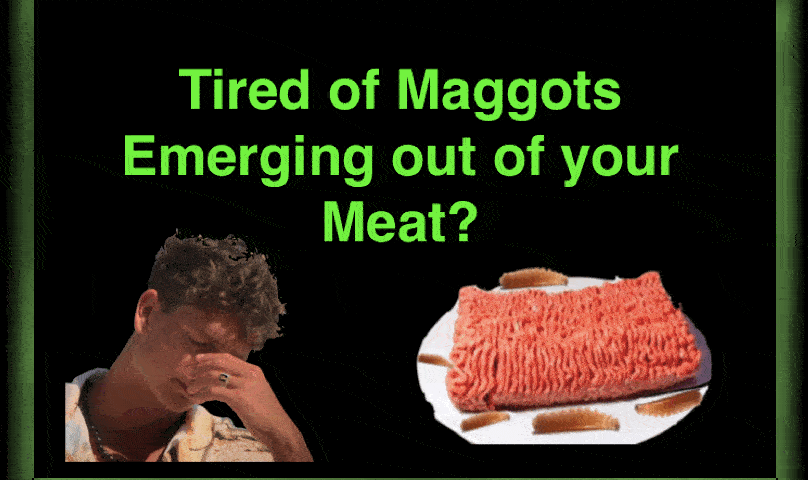THE SCIENTIFIC METHOD
On Rotting Meat and Maggots
So… have you noticed that maggots grow out of rotting meat?
No?
Just me?
In 1668, supermarkets weren’t super. They were just markets. And these markets were not housed in big buildings that had electrical wires running through the walls. These markets did not have refrigerators.
So sometimes, just outside the market, you might happen upon this horrific sight: maggots worming around in hunks of foul-smelling, rotting meat.
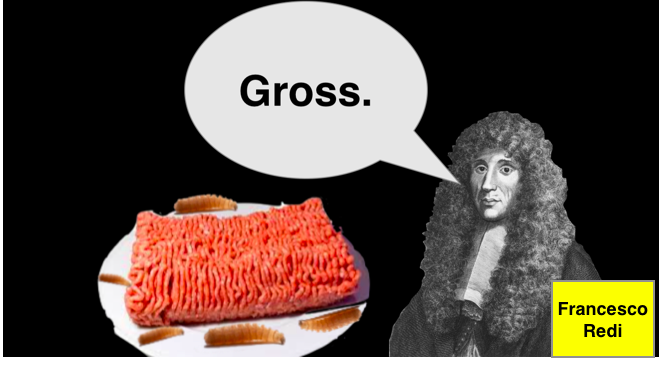
For anyone halfway paying attention, it appeared that the maggots simply emerged from the rotting meat. Concomitantly, there was a theory championed by some folks called Spontaneous Generation. This theory of Spontaneous Generation made the claim that some simple organisms derived from non-living objects. Frogs came from mud, fleas came from dust, and maggots came from rotting meat.
But Francesco Redi was skeptical. He suspected that maggots developed from eggs laid by flies.
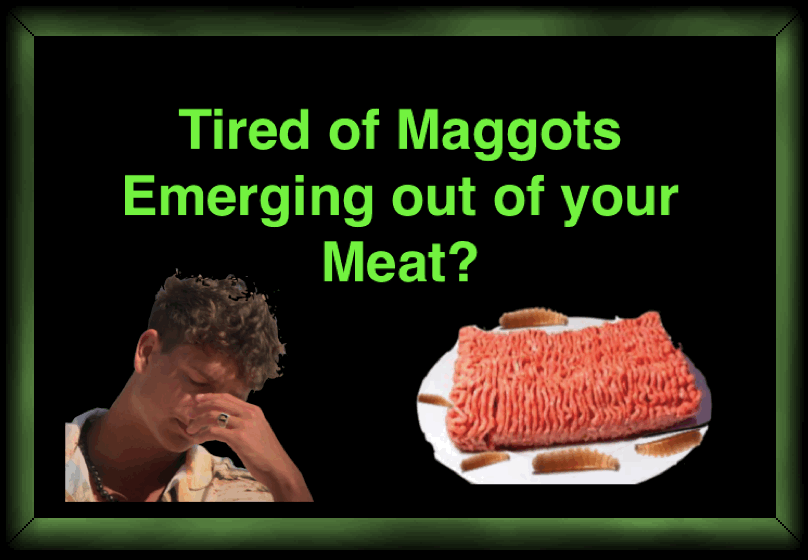
Francesco Redi set out to prove that the maggots didn't "spontaneously generate". We will pretend that he followed the following steps:
- He formulated a guiding question:
- He came up with a claim:
- He designed a controlled experiment:
- "How can one stop maggots from forming in meat?"
- "One can stop maggots from forming in meat by stopping flies from touching the meat."
- He had one jar of rotting meat that had no lid.
- He had one jar of rotting meat that had a sealed lid.
-------------------------------
Ideally, this would have been a CONTROLLED EXPERIMENT.
In simple terms, a controlled experiment involves there being TWO GROUPS: an experimental group and a control group.
| Control Group | Experimental Group |
|---|---|
| One just lets things be "normal". In this case: let flies land on the meat. |
One intervenes in a single very specific way. In this case: stop flies from landing on meat. |
In both groups, at the start of the experiment, everything must be the same except one single element.
Why? Because, we are trying to see if that one single element affects a specific end result. In Francesco Redi's experiment, this specific end result would be: "does one stop maggots from forming in the meat?"
| Independent Variable | Dependent Variable |
|---|---|
| The one single element that is suspected to CAUSE the specific end result |
The specific end result that IS CAUSED |
| (a lid on the jar stopping flies from touching meat) |
(no maggots forming in meat) |
-------------------------------
So Francesco Redi runs this experiment. He has two jars. Both have rotting meat. Both are in identical jars. Both are set out in the same location and at the same time. Every variable is controlled, except the independent variable.
One jar has a lid.
One jar does not.
So what happened?
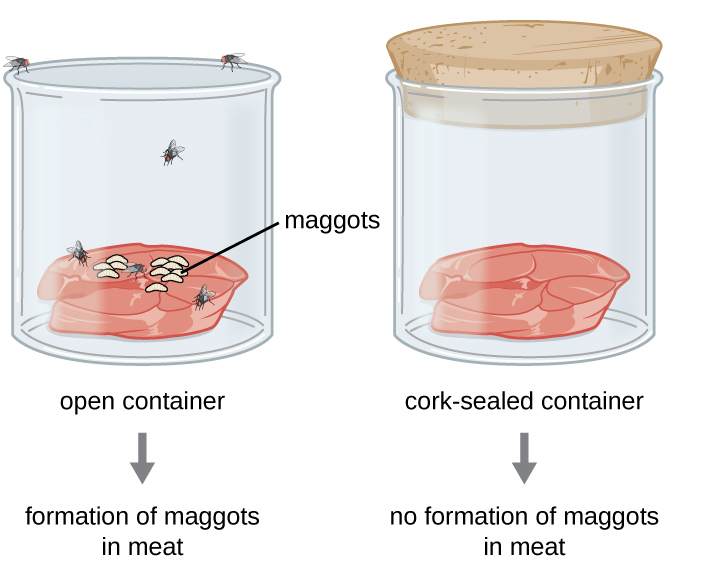
As can be clearly seen in the above image, the jar with NO lid yielded maggots. And the jar WITH a lid did NOT yield maggots.
If Francesco Redi was a good little scientist, he should have collected specific data in a data table. He could have counted the number of maggots that formed in both groups.

Then he should have taken that data table and made a nice visual representation in the form of a Graph™.
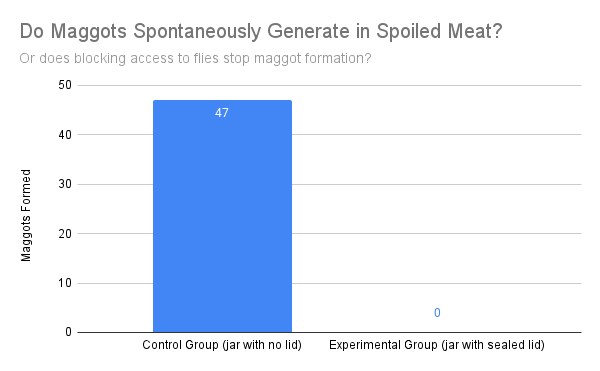
And if Redi was a good little scientist, he should have done MORE THAN JUST A SINGLE TRIAL of this experiment. He should have performed multiple trials of the experiment. Just to be extra sure.

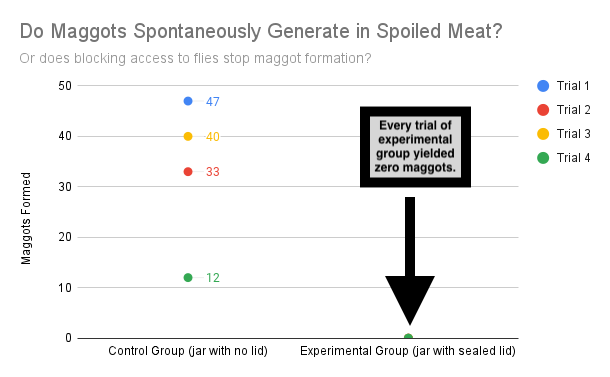
Francesco Redi felt like a champion! He had proved that maggots didn't spontaneously generate from meat! Clearly, their generation in meat had to do with the flies landing on the meat. And, Redi supposed -- although this experiment did NOT prove -- the flies laid microscopic eggs on the meat, which later hatched, yielding tiny maggots.
And in my imagination, Francesco Redi then started a meat-preservation business with a savvy marketing team.
